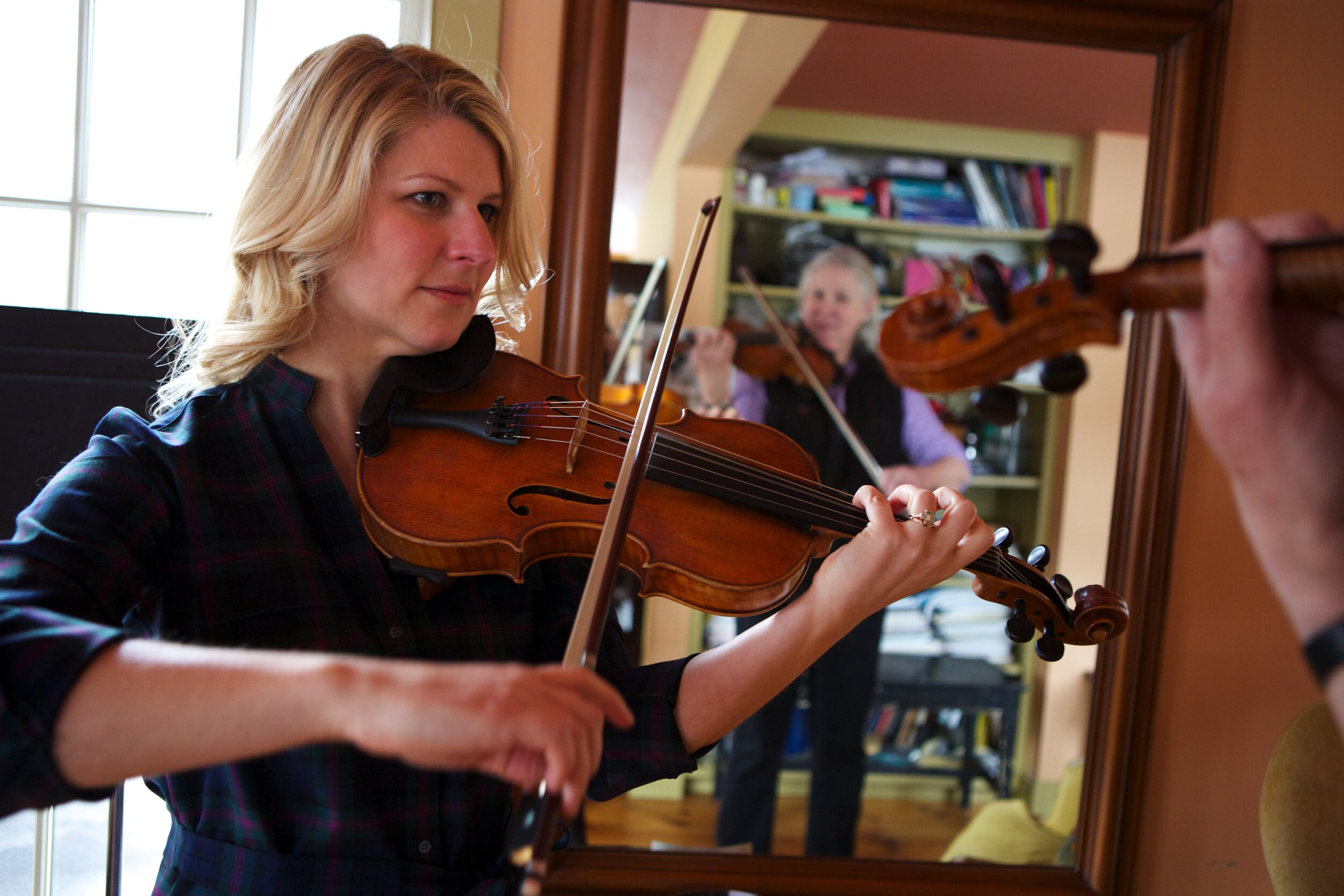Can You Sing It?
I’m a firm believer of the ‘if you can sing it, you can play it’ mentality when it comes to ear training. Correctly singing a phrase, or the entire tune, before you attempt to put your hands on the notes saves valuable practice time, which promotes efficient learning and good muscle memory.
The next time you’re ready for a new tune, try learning the tune away from your instrument.
Here’s how:
Listen to the recording you’ll use to learn the tune on repeat while you’re working on chores, taking a shower, walking your dog, or on your work commute. (cough JamWithLauren Downloads are great! wink) Label each phrase as it goes by so you’re familiar with the form: A1, A2, A3, A4, repeat the A..... Then listen for recycled phrases. Is the third phrase the same as the first? Does the B part use the same fourth phrase?
I’ll use Red Haired Boy as an example.
Form:
A1/A2/A3 (same as A1)/ A4 repeat A part
B1/B2 (same as A2)/ B3 (same as A1+A3)/ B4 (same as A4) repeat the B part
This could be boiled down to the following:
A1/2/3(A1)/4repeat
B1/2/3/4repeat
Once you’re clear on the form, choose a phrase to sing along with the recording. Since A1/3 gets used the most, you might start with that. Sing ONLY that phrase, but sing it every time it gets used. This is similar to how you would probably be taught the tune physically in a lesson or workshop class. You could try moving your hand in the direction your voice is moving, or stepping and hopping as you sing. (Except if you’re in the shower or driving- be safe, people). When you think you’ve successfully sung that phrase, turn off the recording and see if you can sing the phrase all by yourself. If there are a few shaky notes where your voice doesn’t settle, chances are you haven’t heard the right note yet and you don’t really know the phrase. Go back and listen for the direction of the melody. Does it go up or down, by step, skip or leap? When you can sing the phrase independently you’re ready to try the same process with a different phrase. After you’ve learned the next phrase, try singing both the phrases you’ve learned at the appropriate times with and without the recording. For Red Haired Boy and tunes with a similar form, you only have to do this process 4 times and you’ll know the tune!
You’ll be surprised when you pick up your instrument. You might be able to play most of the tune right away! The key to connecting your ear to your hands is to continually be using your voice. Sing slowly while your fingers find the notes. Play one phrase at a time, noticing pieces of scales, arpeggios, and ways for you to remember the uniqueness of the phrase or similarities with other phrases. Stitch the tune together with your instrument, in the same manner you learned the tune with your voice.
Your initial attempts at learning this way might seem like a lengthier process, but in the long run, you are laying important groundwork for ear/hand coordination. You can do it! Let me know how it goes, and how much your family loves hearing the same tune on repeat 84 times. My husband might start a support group for household members who have multitasking musician spouses.....


